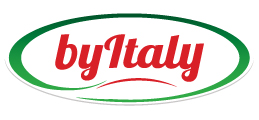To Bio or not to Bio?

To BIO or not to BIO?
We are what we eat. But is it really true that statement? It has been proven the harmfulness of certain types of food, consumed mainly in the wrong amounts, are going to harm your health. On the contrary, unfortunately, it has not yet been shown that proper nutrition based on organic agriculture (“Bio” food) can “preserve” from diseases or grant us a long life.
Despite this, in recent year,s we normally pay more attention to the “healthy nutrition”: at the beginning it was cool and glamor, but now it has gradually been transformed into a lifestyle quite widespread, a mindset that makes you most often check the labels of products to buy (and this is good). Anyway, we trust too much of what is written on them (and this is bad). What does it guarantee that such a food is really organic? is it the price? is it the perception of safety?
First of all, we have to define what “Bio” food is: “An organic diet means a diet that uses products from organic farming”, then organic fertilizers instead of chemical fertilizers or natural predators instead of pesticides.It is a vague definition because the laws about agriculture and nutrition vary from country to country, making it uneven and sometimes hardly to be understood from the consumer point of view.
It should also debunked the myth of authenticity, which is the main leverage of the advertising of such food products: the “homemade” is better, or at least less harmful to health, rather than the so-called industrial products. According to a case study of Altroconsumo we can report several interesting test results:
Yogurt: not always a “Bio” yogurt contains less additives than the conventional yogurt.
Biscuits: in several organic products were found poor quality ingredients, such as palm oil, and the presence of reconstituted flour (refined flour with the addition of middlings) instead of the integral.
Cereals: “Bio” cereals contain more mycotoxins (toxins produced by molds) compared to conventional cereals.
Jam: the differences are very limited, but the “Bio” contains more fruit and less sugar.
Milk: both organic and conventional milk in Italy are devoid of toxin residues (these toxin residues can pass through contaminated feed to the milk).
There are some countries that have restrictive rules and control what is declared on the label, but many others don’t.
In 2012, Italy was the world’s largest exporter of organic products and is the eighth in the world and second in Europe. Moreover, the Italian agriculture is distinguished by the low use of pesticides: all those products, synthetic or natural, which are used to struggle the major diseases of plants. As many as 99.7% of Italian vegetables and fruit is absolutely in compliance with the Italian law.
Organic or non-organic? we have to keep an eye on what is written on the label and do not let us be enchanted by the excessive claims. Most important we have to keep informed and always use our common sense while buying food.
written and edited by Marta Chiaraluce – blogger

